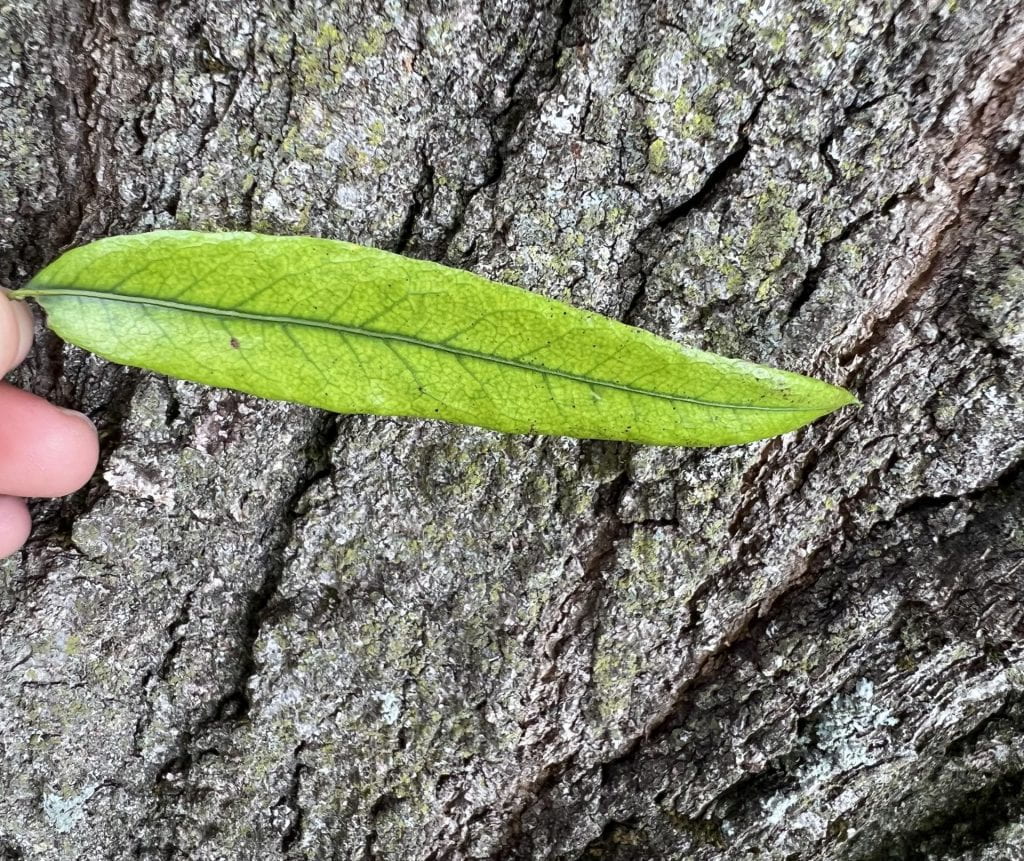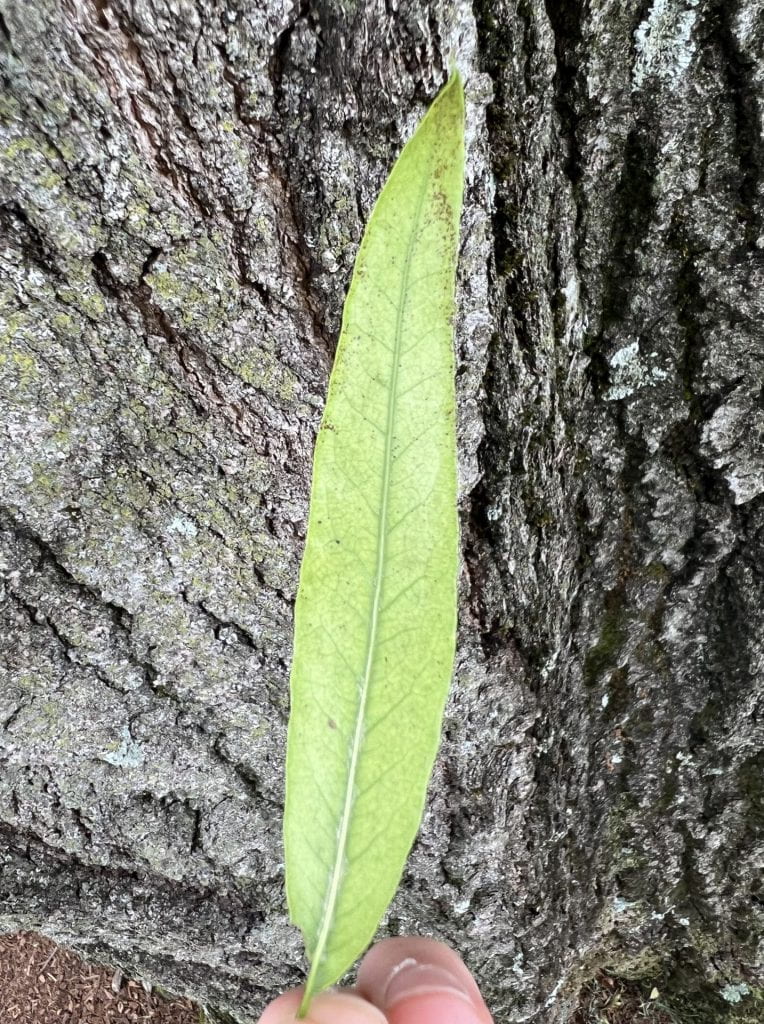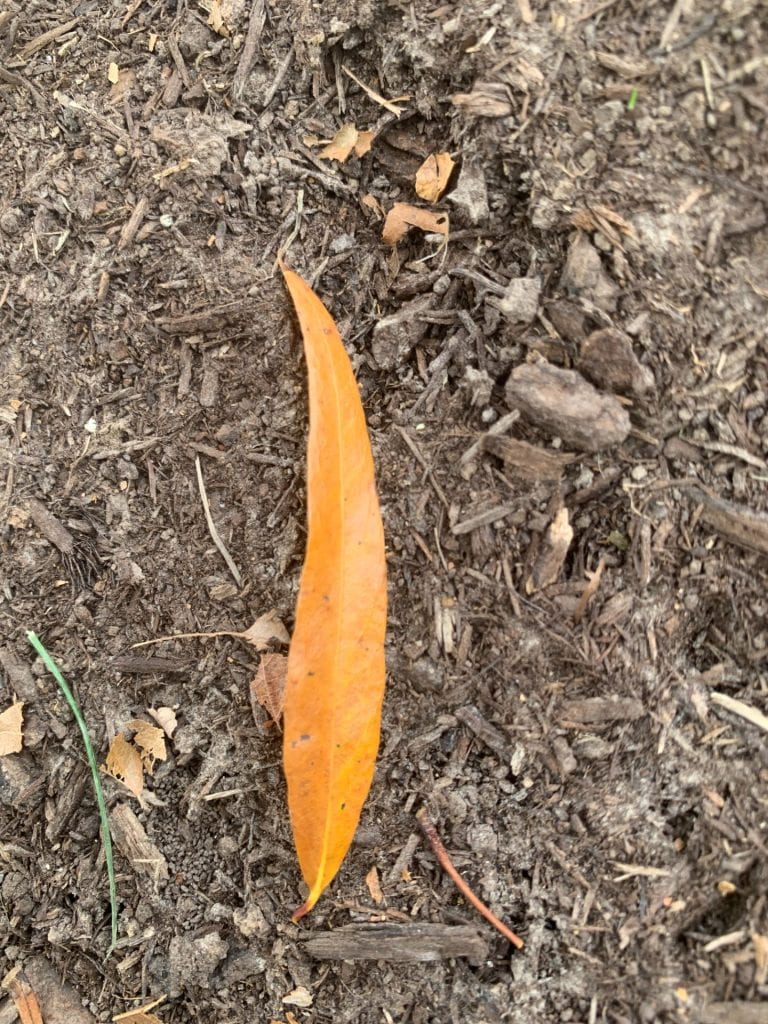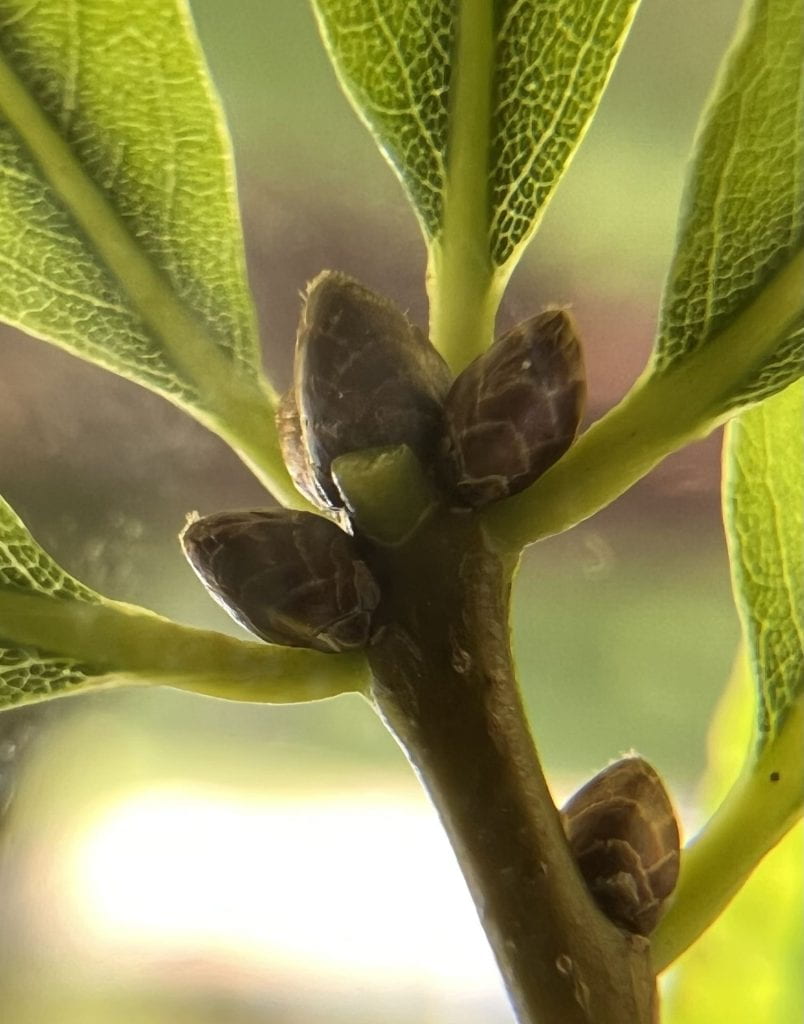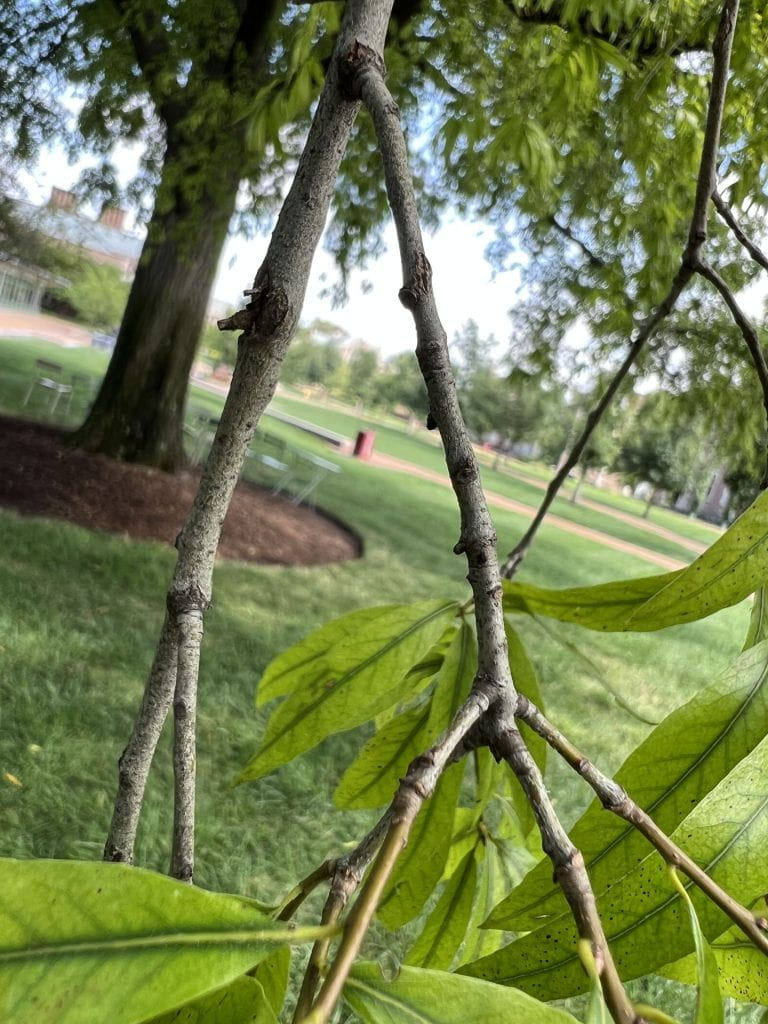Leaf Identification
The leaves of the Willow Oak are simple (no leaflets), alternately arranged on the stem, pinnately veined, and unlobed. The leaves are glossy above, 2-5″ in length, narrowly elliptic, and often slightly bent along the midvein. The leaves have an awn (bristle tip) at their tips.
Twig and Bud Identification
The twigs are gray-brown, smooth, not zig zag, and relatively thin. The buds are pointed, ovoid, and reddish-brown. The terminal buds are clustered.
Bark Identification
The bark is gray, with shallow vertical ridges and furrows.
Fruit Identification
The fruit of the Willow Oak is an acorn. The Willow Oak acorn is nearly globular, with a shallow cup of hairy scales and often, a striped nut. The nut can reach 3/4″ in diameter, and matures in the fall.
Flower Identification
The flowers of the Willow Oak are monoecious; both male and female flowers exist separately but on the same tree. The staminate (male) flowers are greenish-yellow catkins (long, slender unisexual flower clusters) that hang down from the branch. The pistillate (female) flowers are much smaller, pink-tinged green clusters that cling to the stem. The flowers bloom in spring.
Oak ID Tips
- The only other Missouri native oak besides the Willow Oak with an unlobed, untoothed margin is the Shingle Oak. The Willow Oak can be distinguished by its smaller and much more narrowly elliptic leaf. The Shingle Oak is wider and densely hairy on its underside.
- The Willow Oak is similar to other Southern oaks, like the Laurel Oak or Southern Live Oak, among others. The Willow Oak has the distinguishing combination of bristle-tipped leaves (thus, a red oak), narrowly elliptic leaves, tufted vein axils, and a relatively large size tree.
